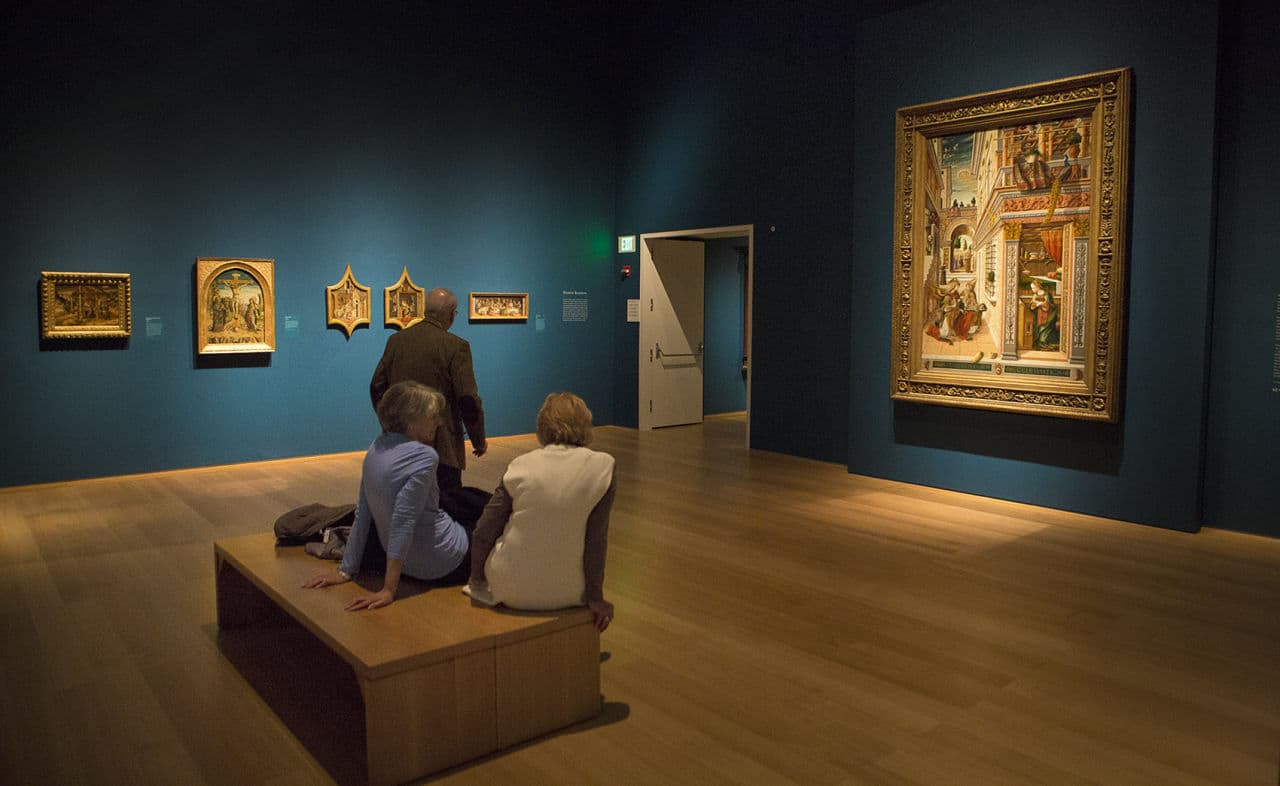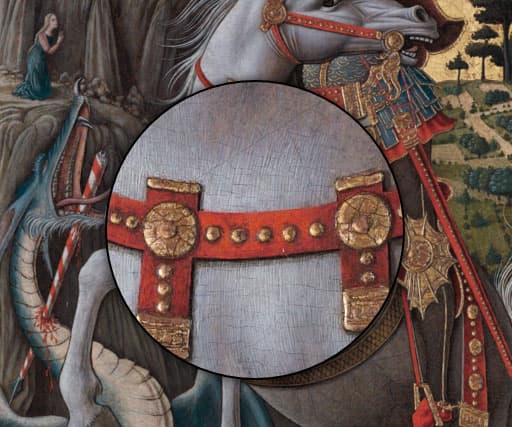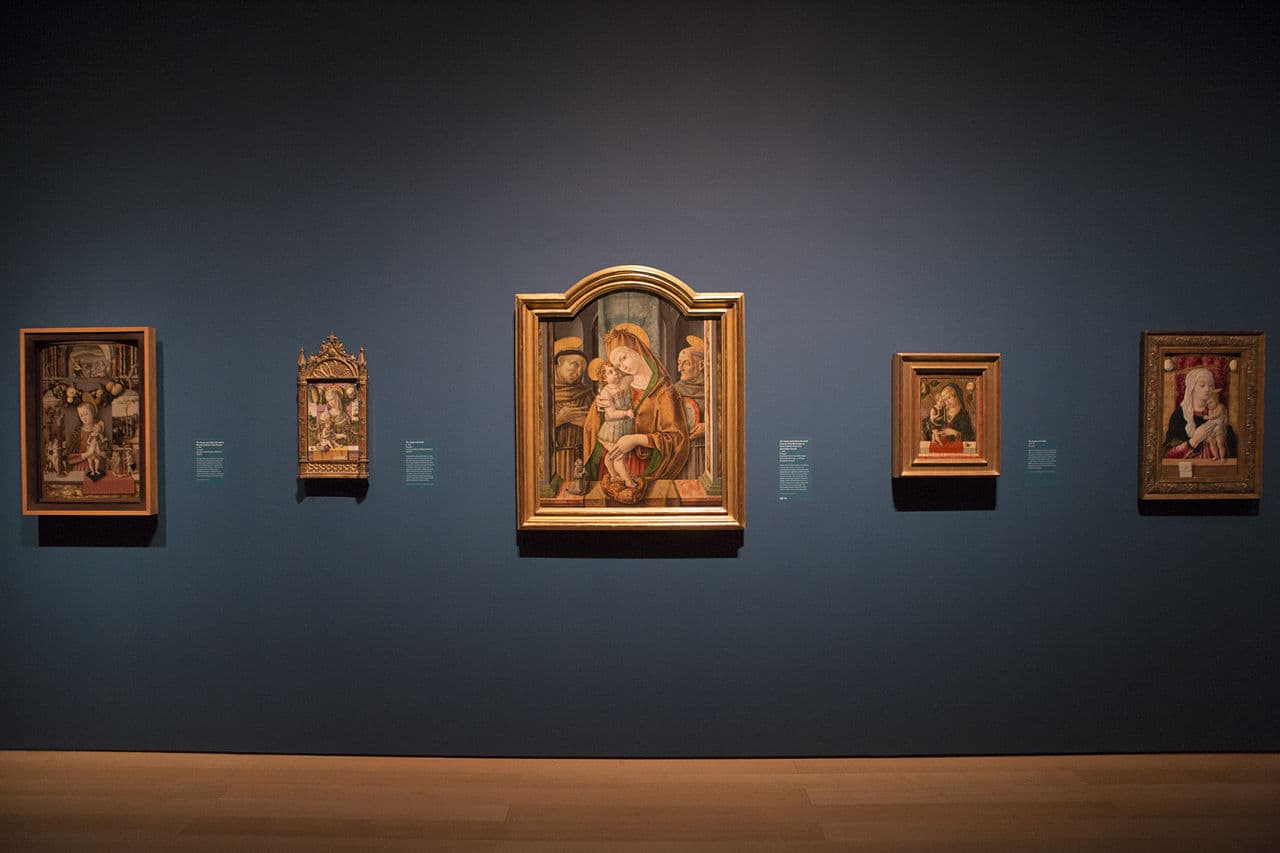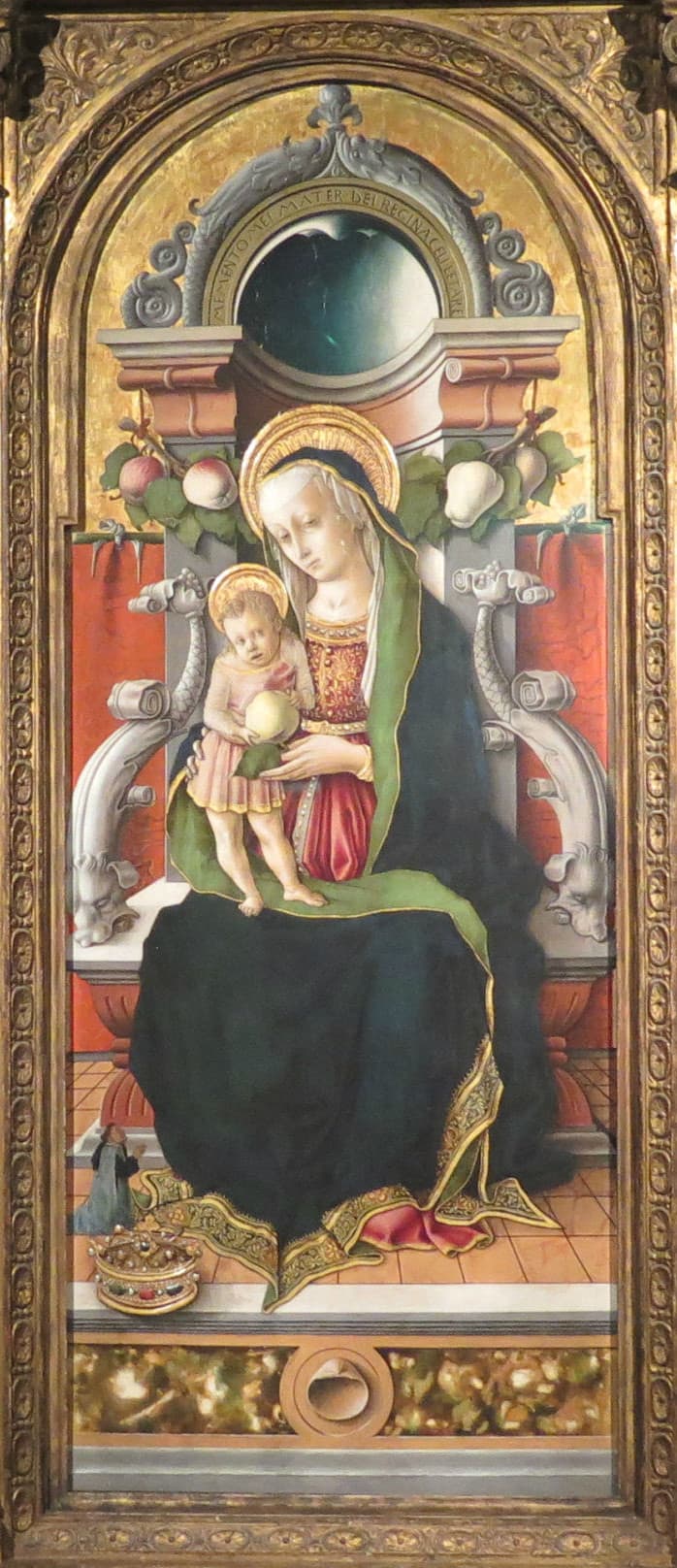Advertisement
Renaissance Painter Crivelli, With His Gilded 'Saint George,' Gets The Gardner Spotlight

Bellini, Raphael and Michelangelo are three of the star artists from the Italian Renaissance. But have you heard of Crivelli?
If not, the Isabella Stewart Gardner Museum here in Boston is working to change that, with a new exhibition that shines a spotlight on this lesser-known — some say neglected — Renaissance painter.
"Ornament & Illusion: Carlo Crivelli of Venice" is the first comprehensive exhibition of his work in the U.S., and Gardner herself was actually the first collector to bring a Crivelli into this country.
Her friend and art consultant in Italy, Bernard Berenson, wrote her an impassioned letter in 1897 after he found a Crivelli painting:

It is a gorgeous thing, more beautiful than any Japanese lacqueur, decorative as no other picture whatsoever, resplendent in its gold background, its gold armour and brocade. It is a Saint George and the Dragon by Crivelli.
A Gilded Main Attraction
In the days before the show's opening, shipping crates, hydraulic lifts and power tools fill the exhibition space.
Museum registrar Amanda Prugh Venezia says it's a relief to finally see the paintings being hung in the gallery. As part of her detail-oriented job she orchestrated safe passage for about two dozen masterworks the museum borrowed from 19 collections around the world.
“This piece from the National Gallery, London had to be shipped in a cargo plane instead of a regular aircraft because it’s oversized,” Prugh Venezia says about the dramatic “The Annunciation, with St. Emidius” (1486).

But this show's gilded main attraction didn’t have very far to travel. The Gardner’s beloved "Saint George Slaying the Dragon" (1470) usually hangs right next door, in the historic palazzo's lush Raphael Room.
Even so, Prugh Venezia admits she’s been anxious about relocating the painting to the new building’s temporary gallery.
“We’re always really watchful because any time you move a work of art you could be subjecting it to a little bit of damage,” she explains, “so it’s slightly nerve-wracking when you’re taking a major masterpiece like Gardner’s first Crivelli in America down, but yeah, it’s exciting.”
Curator Nat Silver is clearly excited, too.
“We often cite Gardner as a pioneer in many different fields, and this is just one more example," he says. "There were no Crivellis before she brought 'Saint George Slaying the Dragon' here.”
Making The Ornate Work Shine Again
Art historian and consultant Berenson found this painting for Gardner in Italy. The ornate work depicts a young, almost pretty and intently focused man, clad in armor, defeating an injured, bleeding dragon. Saint George's gray, harnessed horse turns away, frightened.

But look more closely, the curator urges, and you can see details that came to light after the museum's senior conservator cleaned and restored the painting for the first time since 1935.
“One of the things you can now see that he’s cleaned it so beautifully is that each of these buttons — which look like they would’ve been a gold button on the harness — you see these just tiny, tiny subtle little shadows,” Silver explains, saying they give the work a 3-D quality.
Conservator Gianfranco Pocobene collaborated with his peers at the Museum of Fine Arts to learn more about the painstakingly executed techniques Crivelli used to create this work, which took the artist 30 years. They scientifically analyzed Crivelli's pigments and materials.
“One of the great confirmations was that the figure of Saint George — who’s clad in this dark brown armor on his legs and his arm, and also this sword — you’d think that’s just brown paint, but originally it was silver leaf,” Pocobene describes. "It’s now tarnished so we’re not seeing that effect anymore.”
Advertisement

It took Pocobene five months to make "Saint George" shine again, and he loved every minute.
“It was a fantastic experience to be able to walk into the lab every morning and not go look at emails, try to avoid meetings — but I shouldn’t be saying that,” he says, laughing, “but that’s the feeling you have when you have something beautiful like this — you just want to be in front of it.”
Curator Silver said Berenson and Gardner recognized the painting's eye-popping beauty back in 1897, and their purchase ignited a trend when they brought "Saint George" to the U.S.
“It gave Crivelli an additional oomph," Silver says. "A Crivelli in the Gardner collection was quite a seal of approval in the eyes of American collectors."

Places like the MFA followed Gardner's lead, according to Silver, who also says Crivelli was largely overlooked by early 20th century art historians. “They didn’t value highly painters who used a lot of gold and silver, it was seen as 'retardataire' or backwards or Gothic.”
But Silver calls Crivelli a master at creating effects with metals. The recently cleaned painting practically glows.

And the museum's new exhibition reveals something else about "Saint George" — that it’s actually a fragment, one of six, from a large altarpiece that hung in a small beach town church for 350 years. Silver explains how in the 1800s works like this became hot commodities.
“An altarpiece this big — seven or eight feet tall with six paintings in it — was a prime target," the curator says. "Dealers knew that the sum of the parts was much more than the altarpiece itself. And so all of the fragments went their separate ways.”
The pieces ultimately ended up in collections as far apart as Tulsa and Krakow. But now, until Jan. 25, four of the broken up altarpieces are reunited in Boston — back with Saint George and his dragon.
